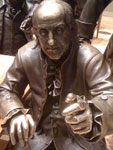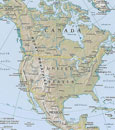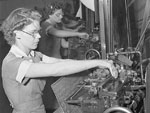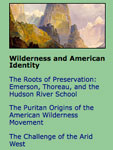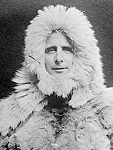Learner Response Systems (Clickers)

Learner Response Systems are handheld remote controls that allow students to respond instantly to classroom activities or learning. The Learner Remote Systems, commonly referred to as clickers, put the power to immediately answer questions into the hands of students. This tool allows teachers to provide formal and informal assessments to any number of students. Student responses can then be recorded in a number of different formats allowing the teacher flexibility when assessing responses and organizing data.
Learner Response Systems can be an incredible tool. Students love technology and, by putting the clickers in their hands, they feel a sense of importance in the classroom. They can be active participants without raising their hands and risking the awkwardness of a wrong answer in front of their peers. And they can share their ideas and answers without fear or hesitation.
There are several types of clickers. Teachers can evaluate how clickers will be used in class and determine budgetary constraints and the depth of response desired as they range in price and features. Almost all Learner Response Systems are compatible with PCs and Macs. The cost of the product is determined by the manufacturer and often is adjusted based on the quantity ordered.
The Learner Response Systems work using 2.4 GHz wireless technology that plugs directly into any USB port. Accompanying software allows the teacher to do a couple of important things. The first is importing questions they already have into the program. Second is the ability to export student responses into an Excel file format for faster analysis of results. Finally, most software programs have the ability to interact with other programs such as Word and Web browsers.
Although some clickers support open-ended questions and short answers, the most well-known types allow students to reply to multiple-choice questions, using a series of buttons on the remote that correspond to the possible answers.
There are countless opportunities to incorporate Learner Response Systems into a social studies classroom to increase student engagement, allow for rapid feedback, and assist teachers in planning lessons and activities. Pre-Testing One great way to use the clickers is through pre-testing. Before a teacher begins a unit, topic, or era, a short multiple-choice survey can be created using the key ideas that will be covered. Using the software provided by the manufacturer, the teacher can go through the survey and, after students have input their answers, the class responses can be shown on the screen beside the question. Set up the survey with four to six answers to a question and allow the students 45 seconds to a minute to complete each question. The survey should be no longer than 10 questions and the entire pretest can be completed in 15 – 20 minutes if students are already familiar with the Learner Response System. For this activity, it is not necessary to show individual responses because the relevant information is how the class performed as a whole. This will allow the teacher and the students to see how much prior knowledge they already possess. Once the teacher has an idea which key ideas the students are, and are not, already familiar with, the coming unit can be altered to maximize student learning. If a majority of the students already know the key information, a teacher can then spend more time in the areas where the class struggled. Formal Assessment Another great use for the Learner Response System is for formal assessment. To use this as a quiz or exam, the test is developed similarly to the pretest mentioned above. The first major change is that the students must register the remote with their name or student identification number so that the individual responses are recorded for that student. The second major change is that the questions should be timed. The teacher will set a predetermined time for each question, for example 45 seconds, and after the set time the questions automatically rotate to the next question in the exam. The final major change is that the teacher does not want to show any student responses. Instead, the teacher should allow the students to complete the exam and then all answers are stored within the software program provided by the company. After the completion of the quiz, the scores can then be converted into an Excel file for easier assessment.
Most Learner Response Systems allow for the teacher to look at how each student, and the class, did on each individual question and on the exam in its entirety. If the teacher has broken down the exam into key ideas from the unit, it is quick and easy to evaluate where individual students or the class struggled or excelled, which can be crucial in planning revision and reteaching of some subject matter or skills. To expand on the exam, teachers could include pictures, maps, and graphs to test social studies skills as well as content knowledge. From a teacher’s perspective, there is no grading to be done and the results are instant which allows for quick turnaround on lesson planning and evaluation of student performance. Thought-Provoking Analysis The clickers can also be used to provide thought-provoking analysis for the students. This is done by posing a critical thinking question to the class and then allowing them two – three minutes to respond to the question. After all the responses are in, the total responses for each possible answer can be shown to the class in either raw numbers or in a graph. The students can then work with a partner using think, pair, share to discuss why one answer received the most responses (i.e. why it’s right) and why others received fewer responses (i.e. why it’s wrong). This is a great activity for getting a class to start thinking about what makes answers right or wrong and can be used to answer and provide discussion at all levels of Bloom’s Taxonomy. A fourth simple classroom activity for the social studies classroom is using the Learner Response Systems to make predictions about what is about to happen. An example of this could be the Treaty of Versailles. Allow students to review what each of the Big 3 wanted out of the Paris Peace Conference, then allow the students to use the clickers to choose a prediction from a list of possibilities. This can be done as a great small group activity by having 3-4 students discuss what the best prediction is and why it is the best. After the groups have discussed and registered a response, show them the correct answer with the raw numbers or graph of how they responded. Have the students discuss as a class what factors influenced their decision and, if they were incorrect, what caused them to be wrong. Seeing the responses and then discussion will lead to better understanding, better dialogue between students, and higher-level thinking. Other Uses There are also several ways to use the clickers in a non-assessment format as well. One example is that the clickers can simply be used to take attendance every day. If the students are well versed in using the Learner Response Systems, they will be able to come in, activate their clicker, which signals they are present in the classroom.
Vanderbilt University's Center for Teaching looks at teaching with clickers.
Research study "Waking the Dead: Using Interactive Technology to Engage Passive Listeners in the Classroom" tests student perceptions of clickers.
Another study, "Learning by Remote Control," suggests that clickers can help move classrooms away from lectures towards greater interactivity.
